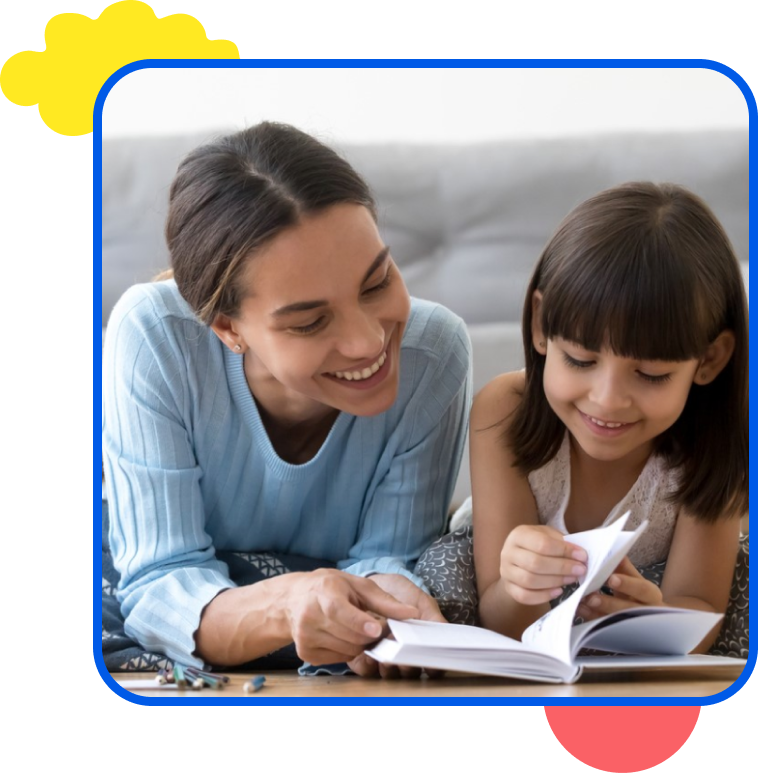French vs Spanish: Which Is Easier for Kids to Learn?



Which one is more useful? Which one is harder to learn? Which one has more native speakers?
If you’re trying to decide whether to enroll your child in French or Spanish classes, those are likely some questions that have run through your mind.
Here are the answers:
- The usefulness depends on why you want your child to learn French or Spanish.
- The difficulty depends on how much your child has exposure to and interest in French or Spanish.
- There are approximately 321 million French speakers and 595 million Spanish speakers worldwide (including native and non-native speakers).
Is that enough information to help you decide which language is best for your child to learn? If so, great! Check out our online language classes for kids in French and Spanish!
However, if you need more information, don’t worry! In the rest of this blog post, we’ll help you decide by digging deeper into the intricacies of French vs Spanish by looking at:
- An overview of the French and Spanish languages, including what young students may find challenging to learn
- 5 questions to ask yourself to determine which language to choose for your child
- The top benefits of learning languages, such as French or Spanish, during early childhood
- How your child can try out a class in either French or Spanish for FREE
Let’s begin!
French language overview
Why do you want your child to learn French? Is it because French is a gateway to some of the world’s most renowned art, music, and literature? Because French sounds beautiful to your ears? Or is it simply because French is your family’s heritage language?
Honestly, all of those are great reasons for your child to learn French!
French is the official language in 29 countries, including France, Belgium, Senegal, Haiti, and the Quebec region of Canada. According to the Organisation Internationale of la Francophonie (OIF), there are around 321 million French speakers across the world.
French is also the language of several exciting industries that you may hope your child will explore for career paths in the future. For example, French is a widely spoken language for international relations and the hospitality industry.
That means native and fluent speakers of French in such industries may have an advantage in communicating with colleagues, negotiating, and persuading others to see their point of view.
Still, learning French can be challenging! Children and adults alike tend to struggle with the following aspects of French:
- Pronunciation. French pronunciation can be a bit tricky. The language is known for its melodic sounds and nasal vowels. The challenge lies in mastering the distinctive French accent and handling sounds that aren’t present in English, such as the guttural “r” and the unique nasalized vowels like “en” and “an.”
- Gendered Nouns. In French, every noun is assigned a gender – masculine or feminine. This concept can be confusing for English-speaking children who are not accustomed to assigning gender to inanimate objects. For example, “a chair” (la chaise) is feminine, while “a table” (le table) is masculine.
- Verb Conjugations. French verbs can be quite complex, with multiple conjugations based on tense, subject, and mood. Young students may find it challenging to navigate these intricate conjugation rules. For instance, conjugating the verb “to be” (être) in the present tense requires different forms like “je suis” (I am) and “tu es” (you are).
Is Spanish any easier?
Spanish language overview
There are many reasons why you might want your child to learn Spanish, especially if you live in the United States. According to recent data, 41.76 million Spanish speakers live in the US, making it the second most spoken language in the country!
Spanish is the official language in 21 countries, including Spain and most of Latin America. It’s also the second most spoken language globally, with Spain’s Instituto Cervantes estimating around 595 million Spanish speakers worldwide.
Apart from the number of speakers, there are numerous other exciting reasons why you might want your child to learn Spanish!
You may like the idea of your child being able to understand the richness of Spanish and Latin American literature, cinema, and art. Or you may hope they explore career paths in which Spanish is highly valuable, such as international business or healthcare. Or perhaps Spanish is your family’s heritage language, and you want to ensure this vital part of your culture continues with your children.
All great reasons for your child to learn Spanish!
But is Spanish “easy” to learn? Again, that depends on your child’s background and exposure to the language. Still, we find young learners tend to struggle with the following aspects of Spanish:
- Pronunciation. Spanish is mostly a phonetic language, meaning its pronunciation is generally consistent with its spelling. Still, it can be difficult for native English speakers to get right. For example, the rolled “r” (or “rr”) sound, where you rapidly tap your tongue against the roof of your mouth, can be pretty challenging to pronounce correctly.
- Verb conjugations. Like French, Spanish verbs change depending on the subject (I, you, he/she, etc.) and the tense (e.g., present, past, future, subjunctive). Understanding and using the correct form for the subject and tense can be confusing for children at first.
- Noun-adjective agreement. In Spanish (and French), nouns and adjectives must agree in gender and number. This means that if a noun is feminine, the adjective describing it must also be in the feminine form, and the same goes for masculine nouns. For example, “the red door” would be “la puerta roja” (feminine noun and feminine adjective), while “the big house” would be “la casa grande” (feminine noun and masculine adjective).
So, if there are challenges to learning French or Spanish, how do you choose?
Questions to help parents choose French or Spanish
French and Spanish are both romance languages with rich histories and cultures. Both are widely spoken languages with millions of native and non-native speakers. Both require overcoming many of the same challenges to reach fluency.
So, how do you choose the best one for your child to learn? Ask yourself the following questions before deciding to enroll your child in French or Spanish classes:
- What interests, hobbies, or future aspirations does your child have that may be related to either French or Spanish-speaking cultures or countries?
- Does your family have any cultural or linguistic ties to either the French-speaking or Spanish-speaking world? For example, do you have relatives from these communities?
- Does your child have a personal preference or genuine interest in either the French or Spanish language, such as enjoying the sound of the language, its food, or its cultural celebrations?
- How easily can your child be exposed to native speakers, cultural events, or immersion experiences related to either language in your community or through travel opportunities?
- Do you have access to resources such as language schools, tutors, or online bilingual education courses that can provide quality instruction in either French or Spanish for your child?
Once you’ve decided on French or Spanish, begin your child’s language learning journey as soon as possible to enjoy the benefits of bilingualism in early childhood!
The top benefits of learning French or Spanish during childhood
Whether you choose French or Spanish for your child, learning a new language is a gift that keeps on giving! Start their language learning journey as early as possible to enjoy these incredible benefits.
Cognitive advantages
Research has shown that bilingual children tend to develop enhanced cognitive skills due to the mental exercise of switching between languages. Whether it’s French or Spanish, studying a new language can improve problem-solving abilities, multitasking skills, and creative thinking.
Cultural awareness
By learning French or Spanish, your child gains insight into the rich history, art, literature, and traditions of French-speaking or Spanish-speaking worlds, broadening their cultural horizons. As they grow older, this cultural awareness can promote a deep appreciation for global diversity and intercultural relations.
Global career opportunities
French and Spanish are not only among the most widely spoken languages but are also important in various industries, from international business to diplomacy. By learning French or Spanish during childhood, you increase the likelihood that your child will develop professional-level fluency.
Early start advantage
According to the Critical Period Hypothesis for language acquisition, the best time to learn a language is before the onset of puberty. During that period, children’s brains are like language sponges, naturally soaking up correct pronunciation, syntax, and more. So, the earlier your child begins learning, the more naturally and fluently they can become bilingual, giving them a lifelong advantage in language proficiency.
How to get a free online French or Spanish class for kids
At LingoCircle, we know your child’s language education is a wonderful investment. We also know it’s even better when you can start with a free trial!
That’s why we offer a fantastic opportunity to kickstart your child’s language learning journey with a complimentary class.
Why Choose LingoCircle
- Certified, native-speaking teachers. Our classes are led by certified, native-speaking teachers who provide authentic language instruction, ensuring your child learns from the best.
- Interactive classes. Our classes are interactive, engaging, and designed to make learning a new language fun. Your child will have the chance to interact with peers who share similar proficiency levels, connecting with students from all over the world.
- Small class sizes. To maximize learning, we keep our class sizes small, with a maximum of 5 students. This ensures personalized attention and a conducive learning environment.
To start your child’s free language class trial, click here and fill out the form!


Simple Ways to Learn a Second Language at Home
Get resources and tips to help supplement your bilingual education journey at home.
By providing your email you are signing up to receive emails from Bilingual Bebe. Privacy Policy







